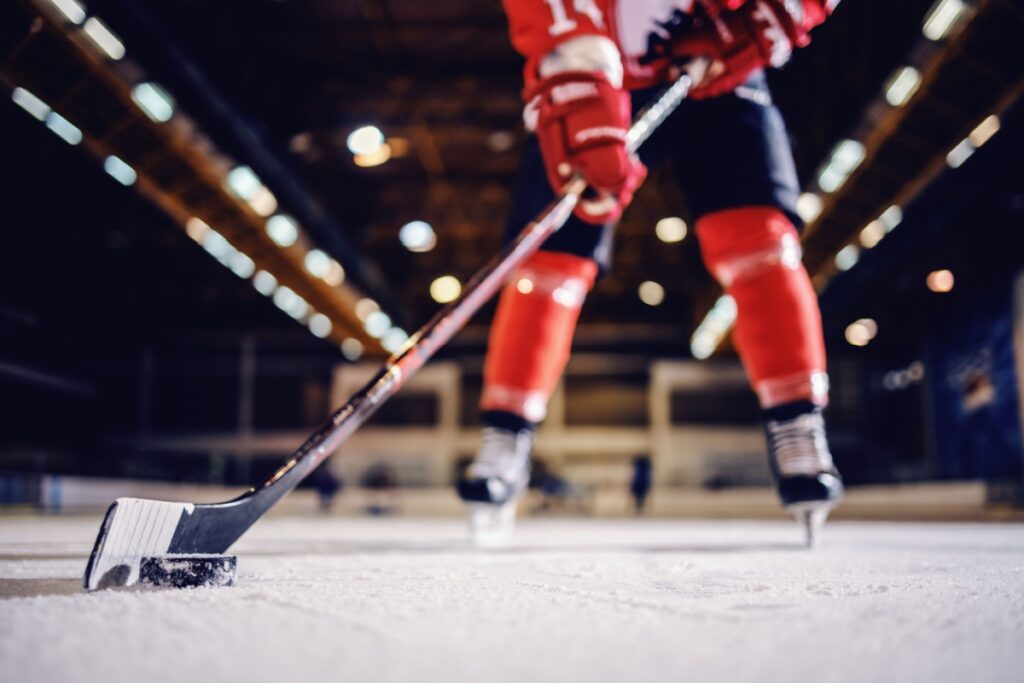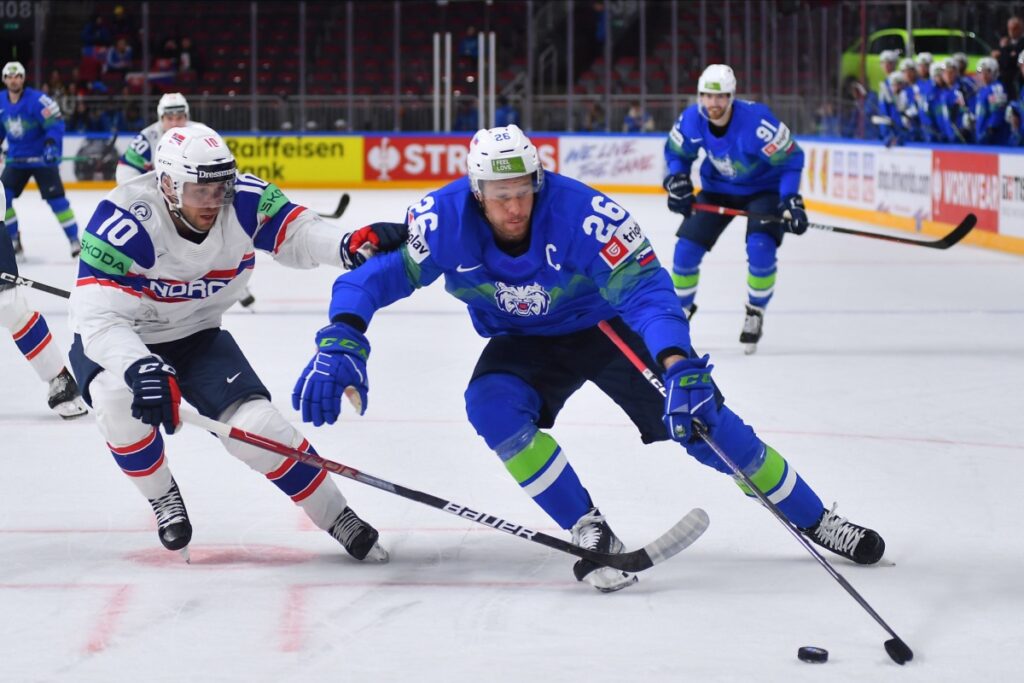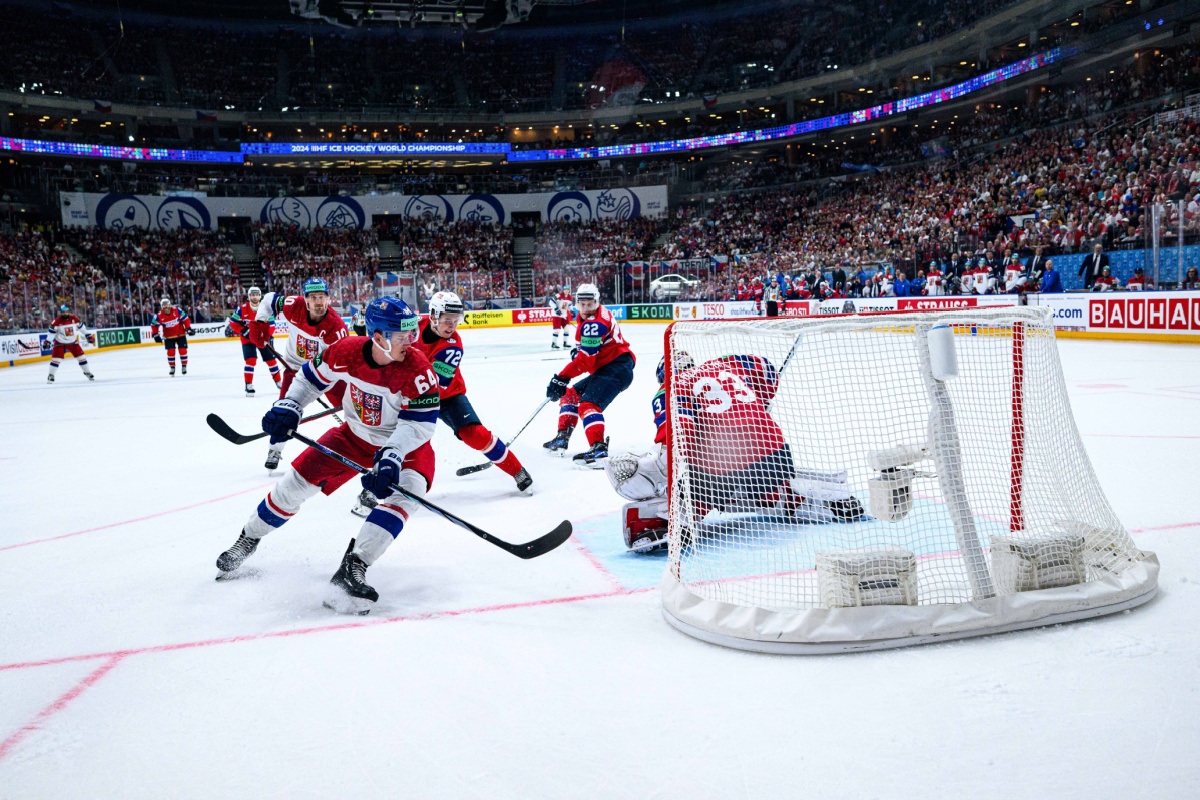Whether you’re new to the rink or just curious about how ice hockey works, this guide will help you understand the basics of the sport!
While Australians traditionally gravitate towards sports like cricket and rugby, ice hockey has been steadily gaining attention Down Under. Despite being a popular pastime in the colder parts of the world, ice hockey is still a sport packed with speed, skill, and excitement. And with a bit of guidance, you’ll soon be able to appreciate and enjoy the game just like any seasoned fan.
Let’s explore the fundamental aspects of ice hockey, from the basic rules and positions to key terminology and essential skills.
So, let’s start with the formations of the teams:
Ice hockey is played between two teams, each consisting of six players on the ice at any one time.
Here are the primary positions and their roles:
- Goaltender (Goalie): The last line of defence, protecting the net from incoming shots.
- Defencemen: Two players who primarily stay near their own goal to block opponents and clear the puck out of the defensive zone.
- Wingers (Left Wing and Right Wing): These forwards usually play along the sides of the ice, assisting both in defence and attack.
- Centre: The all-rounder who takes faceoffs, covers both ends of the ice, and leads offensive plays.
Next, what equipment do you need to play ice hockey?
To get started with ice hockey, you’ll need:
- Ice hockey skates
- A stick
- A helmet with a face cage or visor
- Protective gear, including gloves, shoulder pads, elbow pads, shin guards, and a mouthguard
- A puck
- A full-sized ice rink with goals

Close up of ice hockey player. Photography by Dusan Petkovic via Shutterstock
How do you win a game of ice hockey?
The objective of ice hockey is simple: score more goals than the opposing team. A goal is scored when the puck crosses the opponent’s goal line. A standard game consists of three 20-minute periods, with a short break between each.
How do you score in ice hockey?
Here’s how goals are scored:
- Shooting: Players aim to shoot the puck into the opponent’s net using their stick.
- Assisting: Passing the puck to a teammate in a better position to score.
- Power Plays: Taking advantage of a situation where the opposing team has fewer players on the ice due to a penalty.
What are the basic rules of ice hockey?
At the start of the game, the puck is dropped for a faceoff, and the teams compete to gain control. Here are some basic rules to keep in mind:
- Offside: Players must ensure that the puck crosses the opponent’s blue line before any of their teammates do.
- Icing: A violation that occurs when a player shoots the puck across both the centre red line and the opponent’s goal line without the puck being touched.
- Penalties: Infractions like tripping, high-sticking, or roughing lead to players spending time in the penalty box, giving the other team a power play advantage.

Ice hockey match. Photography by Vitalii Vitleo via Shutterstock
How long is an ice hockey match?
A typical ice hockey game lasts 60 minutes, divided into three periods of 20 minutes each. If the score is tied at the end of regulation, overtime or a shootout decides the winner.
Can I player get penalised in ice hockey?
While ice hockey is known for its physicality, there are strict rules to keep the game fair and safe:
- Minor Penalties: Two-minute infractions for things like hooking or slashing.
- Major Penalties: Five-minute penalties for more serious offenses like fighting.
- Game Misconduct: Ejection from the game for severe violations.
Delve deeper into the world of sport with our list of the 10 Best Sport Autobiography Books You Must Read. Or, test your knowledge with our quiz to see if you can Name Each of these 10 International Sport Stadiums.


